Log in or create new account to save this product to your wishlist.
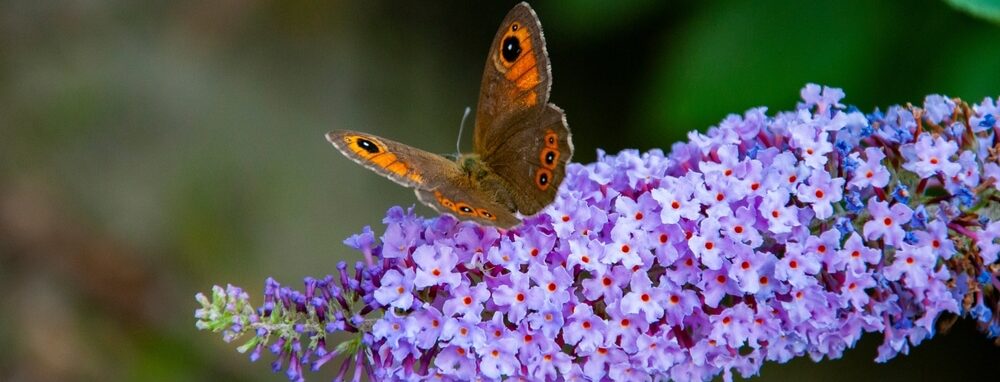
How to Create a Butterfly Garden: A Simple Guide for British Gardens
The UK's butterfly population includes 59 different species. These beautiful winged creatures face a steady decline because of habitat loss, pollution and changing weather patterns. Your garden can become a vital link between nature reserves and natural habitats. Let’s explore how.
A butterfly garden provides the nectar and food plants these delicate insects need. Plants that attract butterflies support their complete lifecycle and bring these colourful visitors to your space.
- What butterflies need
- Extra features to support butterflies
- FAQ about gardening for butterflies
- Creating Your Own Butterfly Haven
Butterflies thrive when their needs are met. Adult butterflies feed on liquid sources like nectar, tree sap and fallen fruit. Their caterpillars, however, depend on specific host plants.
This piece explores the best butterfly-attracting plants suited to British gardens and the flowers that flourish in our climate. You’ll learn how to design a garden habitat with continuous blooms throughout the growing season. This becomes significant during mid to late summer, when butterfly activity peaks.
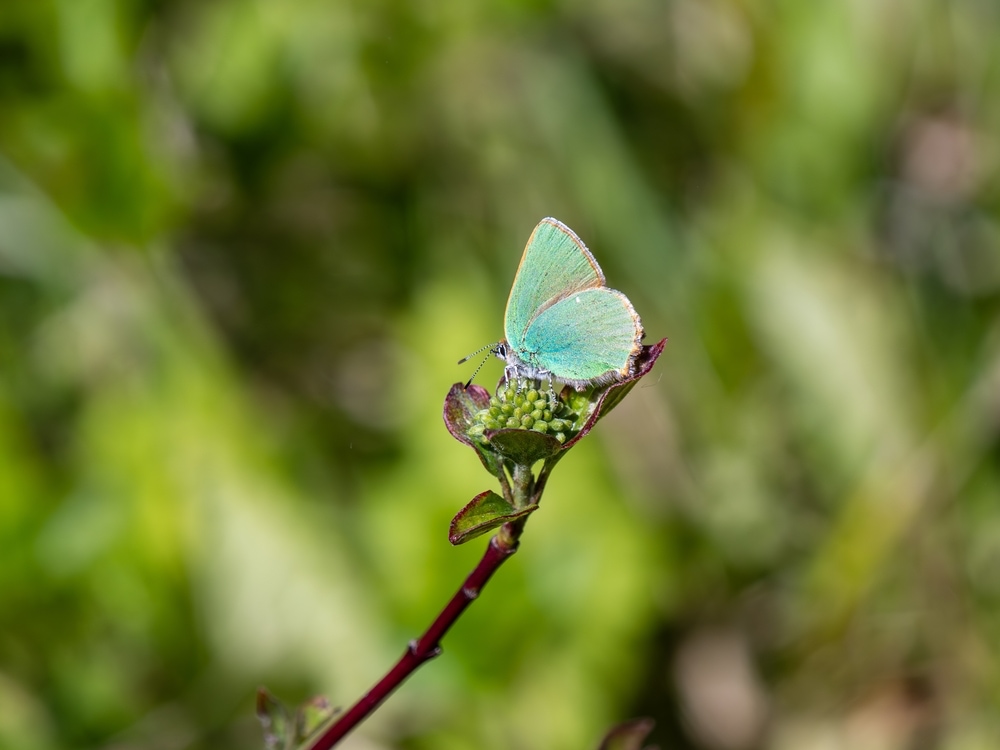
What butterflies need
A butterfly garden’s success depends on meeting these delicate creatures’ needs throughout their life cycle. Butterflies require more than just pretty flowers, as their requirements change at different life stages.
Nectar for energy and survival
Adult butterflies rely on nectar as their main energy source. Spring nectar becomes vital when butterflies need to refuel after hibernation or their exhausting trips. Autumn nectar lets butterflies store energy before hibernation or their return to warmer places.
Host plants for caterpillars
Adult butterflies feed on various plants for nectar, but their caterpillars are picky eaters. A garden’s butterfly diversity depends on having the right plants for egg-laying. Most species can complete their lifecycle on just one or two plant types.
Comma, Peacock, and Red Admiral butterflies’ caterpillars tuck into stinging nettles
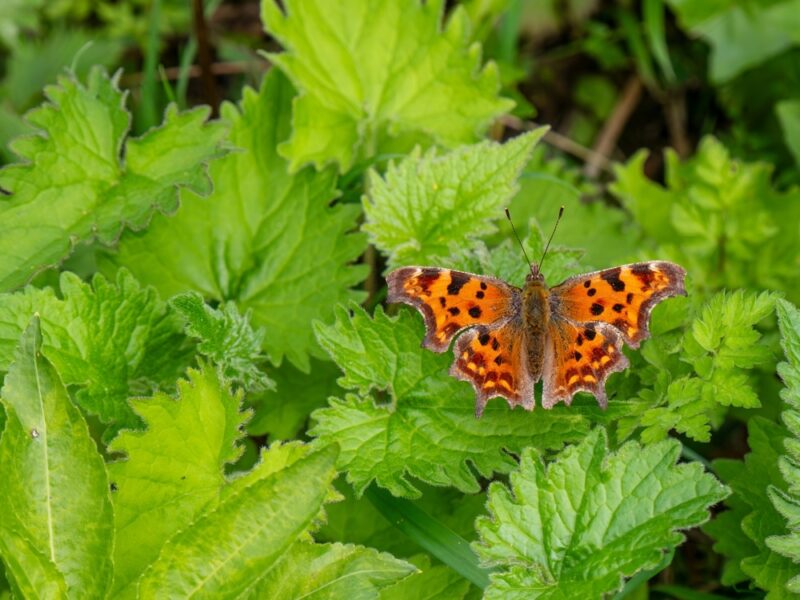
Brimstone caterpillars need alder buckthorn or common buckthorn

Holly Blue caterpillars feed on holly and ivy
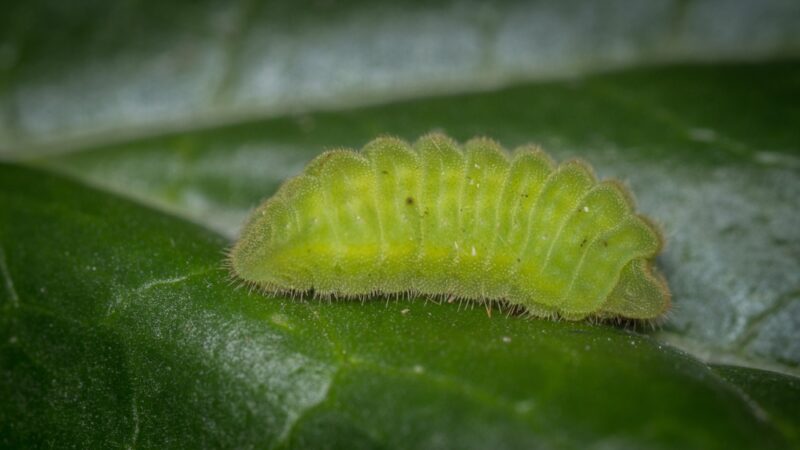
Native grasses attract many “browns” like Meadow Brown and Gatekeeper
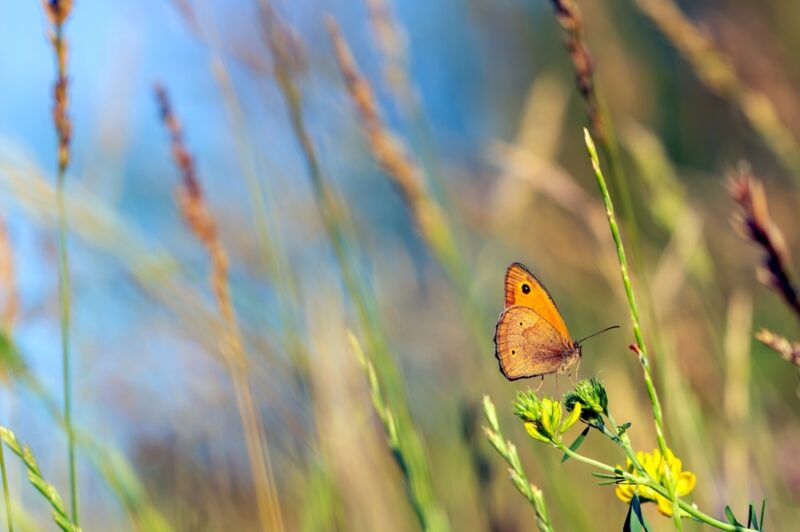
Warmth and shelter from wind
Still, butterflies require a little more than places to feed and lay their eggs. These cold-blooded creatures thrive in warm, protected spots. They seek sunny areas away from strong winds where they can warm up. South-facing spots work best as they get maximum sunlight. The caterpillars also need warm microclimates to grow well. Your garden’s structural diversity with plants of different heights creates warm spots in different “altitudes” naturally.
Safe spaces for resting and roosting
Butterflies also require secure spots to rest, roost at night, and survive winter. They hide under large leaves or dense vegetation when it rains. Many species spend winter as eggs, larvae, or chrysalises hidden in leaf litter or attached to plants. Less garden cleaning in autumn helps protect these hiding places. A butterfly house gives extra protected spaces where butterflies gather, save energy, and stay warm.
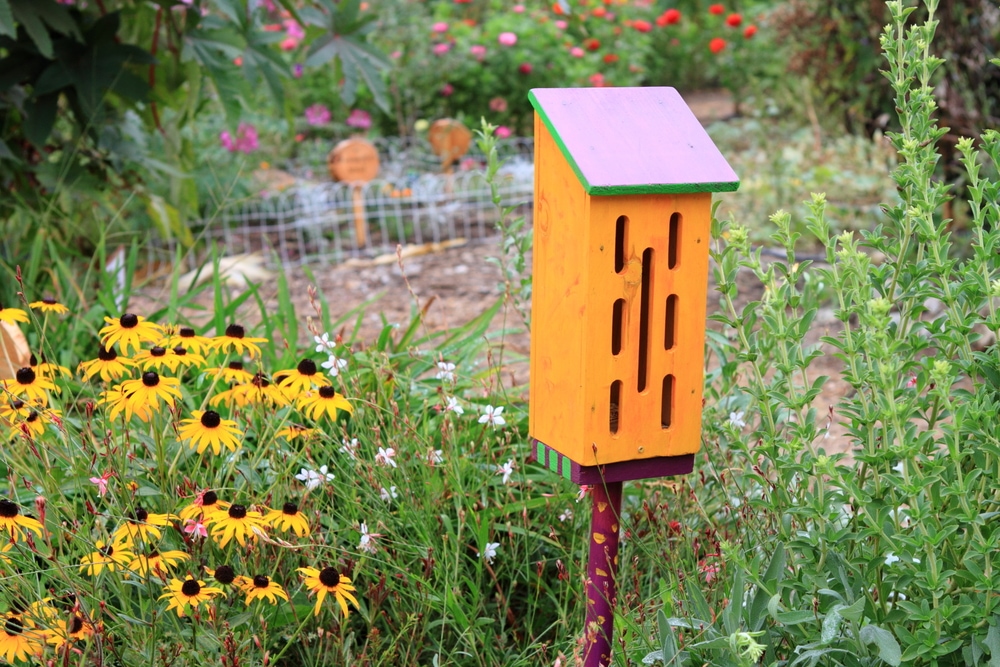
Flowers and herbs butterflies love
Small tubular florets with nectar droplets at the bottom attract butterflies naturally. Their slender proboscis works like a retractable straw, and they require flowers with flat petals to land safely.
- Buddleia (butterfly bush) draws in Small Tortoiseshell, Peacock, Painted Lady, and Red Admiral butterflies with its pink, red, purple, and white blooms throughout July and August.
- Lavender grows best in sunny, sheltered spots with well-drained soil
- Marjoram (oregano) brings in Gatekeepers, Large Skippers and Small Tortoiseshells
- Verbena bonariensis produces purple flowers on tall, wiry stems that are rich in nectar
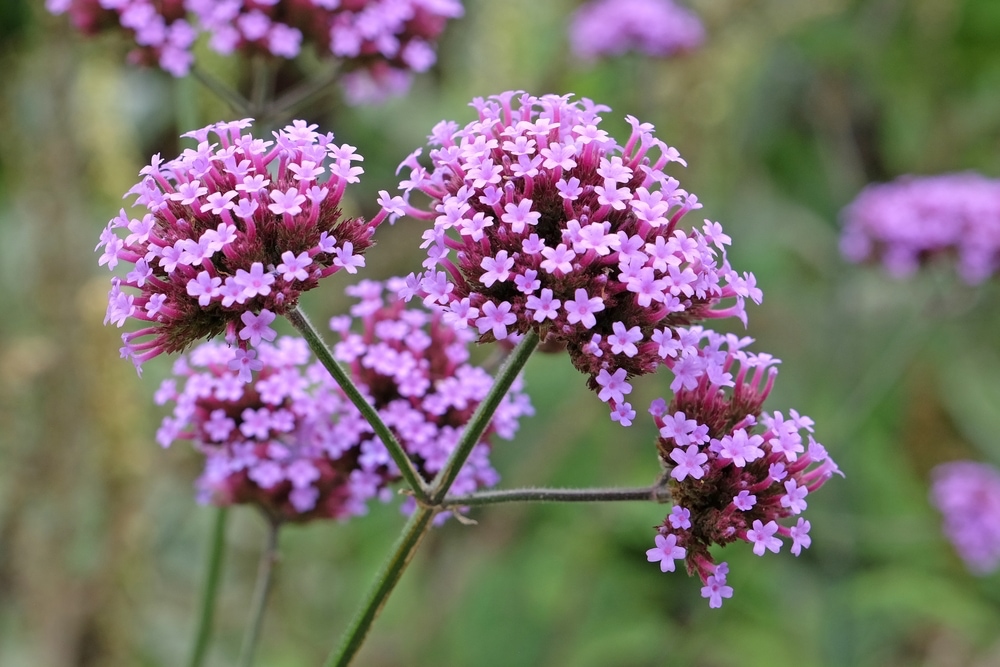
Trees and shrubs that support wildlife
Flowering shrubs planted in sunny spots will attract butterflies whether they’re in sun or shade. Many of these shrubs serve double duty by providing nectar for adults and leaves for caterpillars.
Ivy gives late-season nectar and feeds Holly Blue butterfly larvae. Blackthorn and wild privet support many species like the Black Hairstreak and Holly Blue.
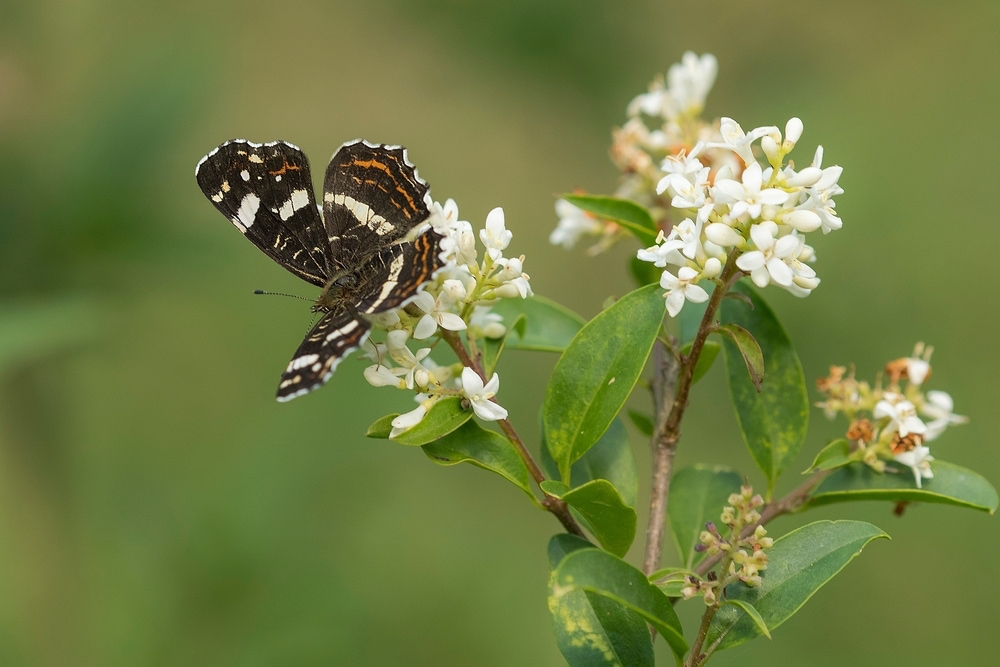
Plants that bloom across the seasons
Butterflies need support all year, so plan for continuous flowering from spring through autumn. Spring flowers like primrose and bluebell help butterflies recover after hibernation. Summer bloomers such as purple coneflower (Echinacea) and knapweed offer plenty of mid-season nectar. Sedum and asters provide autumn fuel to help butterflies prepare for winter.
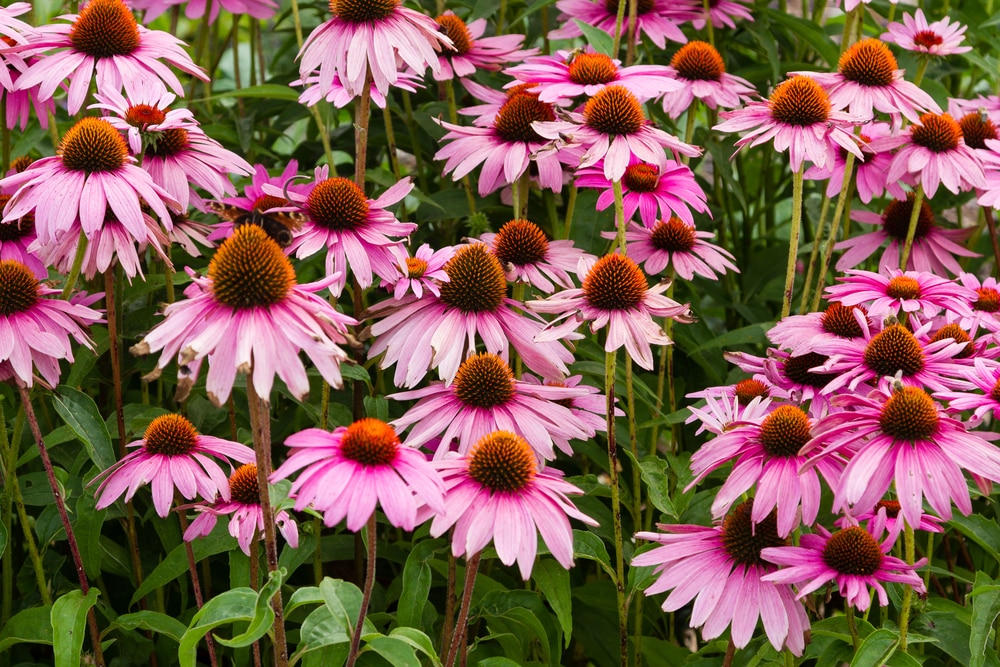
Avoiding modern hybrids with low nectar
Modern hybrid flowers often prioritise looks over nectar content. Traditional varieties usually produce more nectar than their flashier cousins. Traditional single-flowered varieties work better than double pompom types because too many petals can make it hard for butterflies to feed.
Extra features to support butterflies
A regular garden can become a butterfly paradise with several features beyond the right flowers. These simple additions give butterflies everything they need besides nectar plants.
Create a puddling pool for minerals
Butterflies gather around muddy puddles not just for water, but to get vital minerals and salts. Your puddling station needs a shallow container (12–18 inches wide) filled with sand or soil. Add small pebbles as landing spots and mix in minerals by adding:
- A handful of compost
- A pinch of Epsom salts
- Or natural sea salt
The mixture should stay moist without standing water. Place it where butterflies have safe access to partial sun.
Use fruit trees for autumn feeding
Fallen fruit gives butterflies vital energy as they prepare for winter during autumn. Red Admirals, Commas and Speckled Woods love fermenting fruit. Leave some overripe apples and berries under trees instead of clearing all windfalls.
Keep a diary of butterfly species spotted
Tracking your garden’s butterfly visitors makes the experience even more rewarding. A simple diary of species, dates, and their favourite plants helps you see what works best in your garden. Children can develop their observation skills and learn about life cycles while keeping these records. Your notes can also help wider conservation efforts by providing valuable data about local butterfly populations and their migration patterns.
FAQ about gardening for butterflies
Plant nectar-rich flowers like lavender, buddleia, and verbena in sunny, sheltered spots to provide food for adult butterflies. Include host plants such as nettles, holly, and grasses where butterflies can lay eggs and caterpillars can feed. Avoid using pesticides which harm butterflies and their larvae. Create sunny basking spots and sheltered areas to protect butterflies from wind and rain.
Butterflies are excellent pollinators that help flowering plants reproduce, increasing fruit and seed production in your garden. They serve as indicators of a healthy ecosystem, as their presence suggests your garden is free from harmful chemicals. Butterflies contribute to biodiversity by supporting food chains, as they and their caterpillars provide food for birds and other wildlife. Additionally, observing these beautiful insects adds aesthetic value and joy to your gardening experience.
Create a butterfly bath by placing a shallow dish (like a plant saucer) in a sunny spot, filled with damp sand or soil and a small amount of water. Add some flat stones that rise above the water level to give butterflies safe landing spots. For added attraction, mix a small amount of overripe fruit or a pinch of salt into the wet sand to provide minerals butterflies need. Clean and refill the bath regularly to prevent mosquito breeding.

Creating Your Own Butterfly Haven
A butterfly garden ranks among the most rewarding projects any gardener can tackle. Our gardens can serve as vital sanctuaries for the UK’s 59 butterfly species that face substantial challenges from habitat loss and climate change.
You can support our native butterflies regardless of your garden’s size—from sprawling country spaces to small urban balconies. Start small, watch what works, and grow your butterfly-friendly space gradually. The mix of beauty, biodiversity, and conservation turns butterfly gardening a uniquely satisfying pursuit that rewards both wildlife and gardeners alike.
Would you also like to know how to create a bee-friendly garden or how to set up a compost heap? Then check out our articles on the topic. If you have any questions or tips for us, please leave a comment.
Happy gardening!
-
Orchids: A Complete Guide on How to Care for ThemWant to give your orchid the best possible care? Discover essential tips from placement to watering and pruning. Learn everything you need to know!Read more
-
Growing Wisteria Made Simple: From Planting to Perfect BloomsWith blossoms like a purple waterfall, Wisteria sets an almost magical and colourful mood. If you want to grow this beauty in your garden, you’ll need a bit of patience. Don’t worry, it will most definitely pay off.Read more
-
How to Build a DIY Greenhouse: A Practical Guide for Smart SpendersImagine extending your growing season throughout the year, nurturing tender plants regardless of the weather, and creating a personal garden sanctuary. This is precisely what a DIY greenhouse offers you. Let’s learn how to build one.Read more
-
How to Grow Eucalyptus in British GardensWith a little love and care, eucalyptus trees can thrive in English gardens. Since they don’t germinate well without proper help, there are not considered invasive. So, there is no reason not to plant them if you enjoy their looks.Read more
-
Transform Your Garden with All-Year-Round Flowering PlantsDid you know you can enjoy blooming flowers even in January? With the right selection of all year round plants, there’s no need to wait until spring to add some colour to your garden.Read more
-
Volcanic Rock Dust for Your Garden—Application and TipsDid you know that volcanic rock dust is a brilliant organic soil improver? This article explains exactly what it's good for and how to use it properly.Read more
-
How to Use Landscape Fabric ProperlyIf weeds or erosion in your garden are troubling you, landscape fabric might be the solution. We’ll explain how and when to use it properly, just keep on reading.Read more
-
Hostas: A Complete Care GuideIf you have a north-facing garden or some shady corners on your property, hostas are the plants for you. These green delights thrive particularly well in partial to full shade and require consistently moist soil to perform at their best.Read more
Leave a comment
Your answer will be displayed on the site and the interested party will be notified by email.
Leave a comment
Have a question or want to share your experience? Leave us a comment.
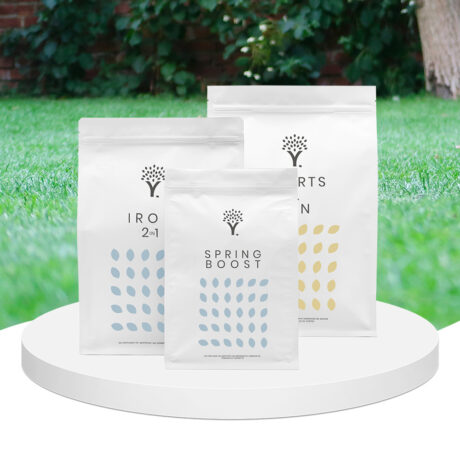
- Order by 2PM = shipped today
- 250.000+ satisfied customers!
- 60 day satisfaction guarantee
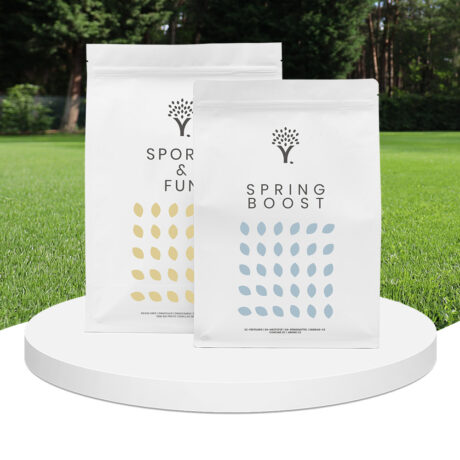
- Order by 2PM = shipped today
- 250.000+ satisfied customers!
- 60 day satisfaction guarantee
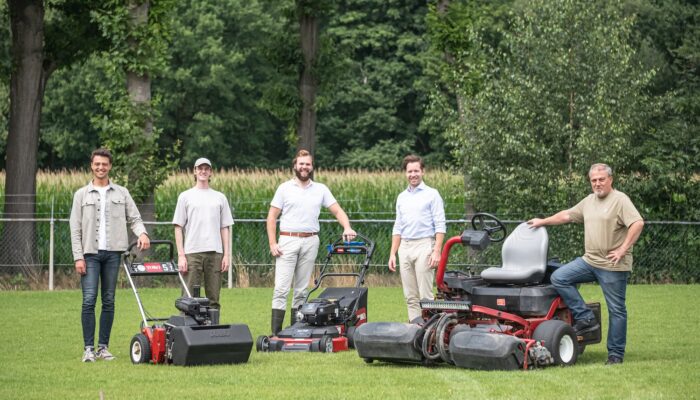
🌱 All important maintenance moments for your lawn during the year. Leave your email and we will send you the lawn calendar for free.
Enter your email
Receive the lawn calendar in the mail
Enjoy a green lawn all year round!





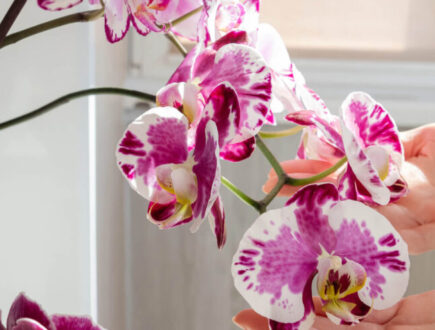
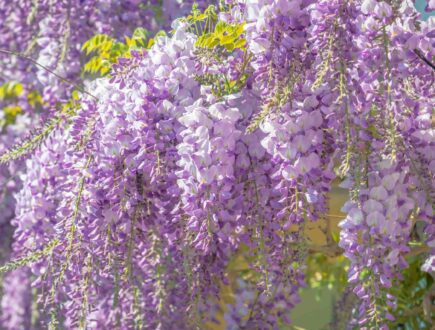

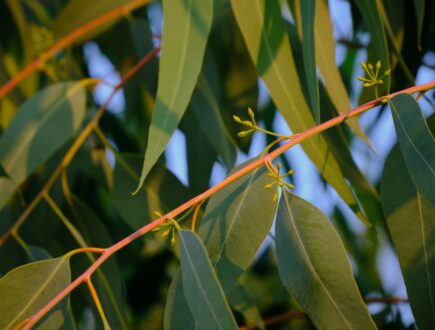
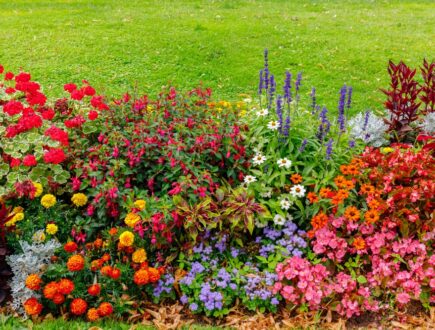

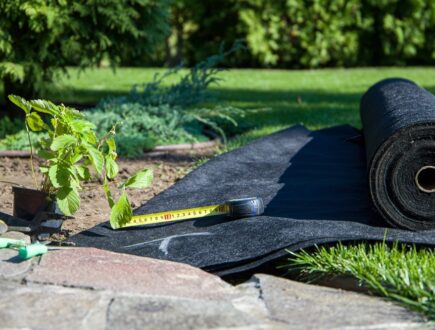

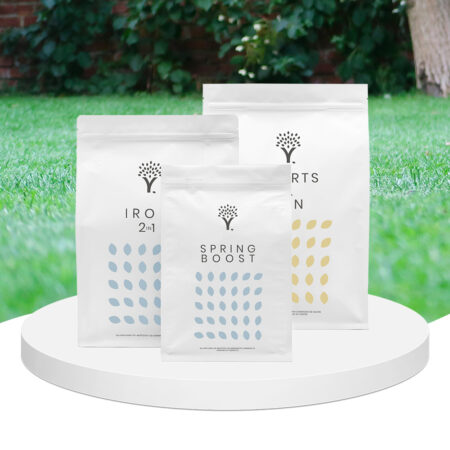
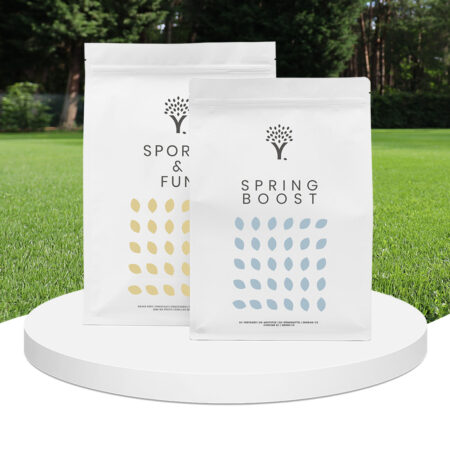

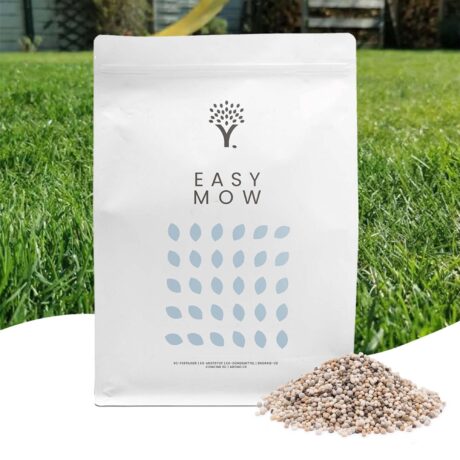

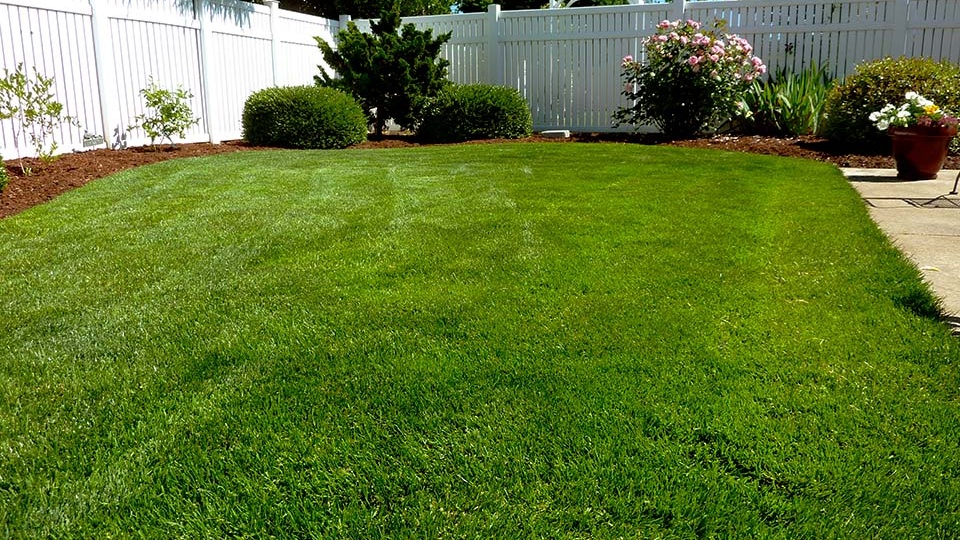

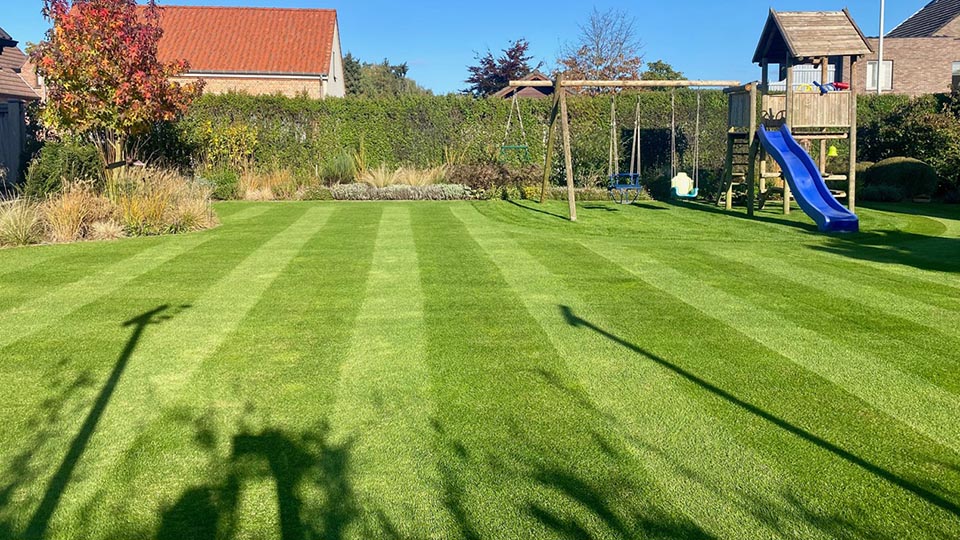
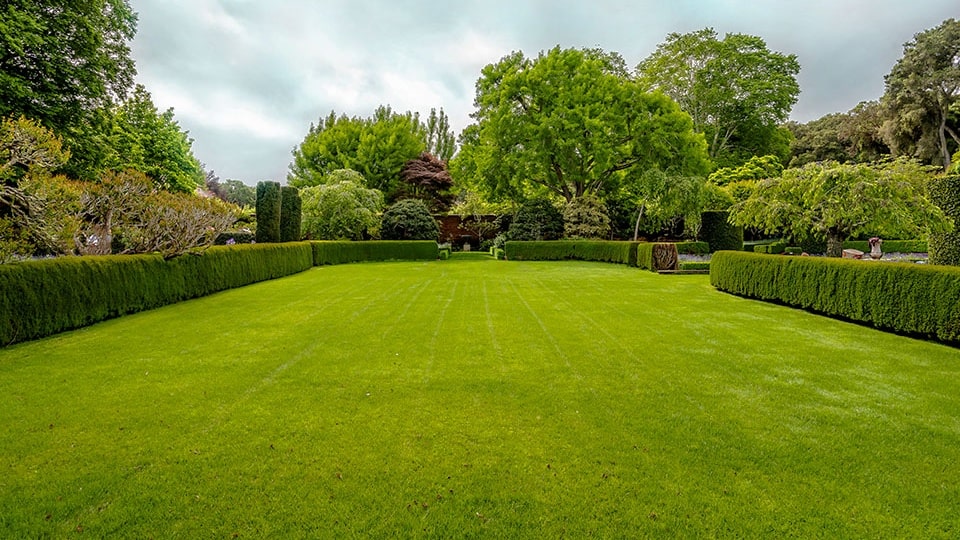
Comments (0)
There are no comments yet. Well then, what are you waiting for to
Be the first to write your comment!inaugurate this pretty page?
Do you have some comments?